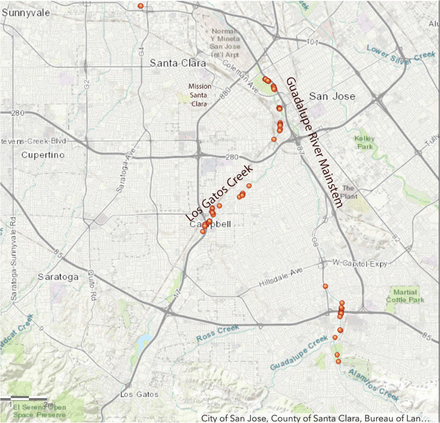Ancient DNA Sequencing Provides Proof of Historic Chinook in Guadalupe River
In 2021, the Guadalupe-Coyote Resource Conservation District (now the North Santa Clara RCD) announced the publication of a collaborative research project that extended the historic range of Chinook salmon into Santa Clara County in Northern California. The District collaborated with Santa Clara University, South Bay Clean Creeks Coalition, Salmon and Steelhead Restoration Group, and University of Oklahoma to complete the study, which provides the first physical evidence that Chinook salmon were historically native to the Guadalupe River watershed, the southernmost major metropolitan area hosting salmon runs in the United States.

Archaeological excavation of the Native American Rancheria associated with Mission Santa Clara de Asís was conducted by Albion Environmental and Santa Clara University from 2012-2013. The study site was situated on the Mission Creek tributary of the Guadalupe River in Santa Clara County, California, and dates from 1781–1834 CE. Ancient DNA extracted from 58 vertebrae samples identified by archaeologists as unspecified salmonids were sequenced at the Laboratories of Molecular Anthropology and Microbiome Research (LMAMR) Ancient Lab at the University of Oklahoma to resolve the specific species of trout and/or salmon. Three specimens were confirmed as Chinook salmon and the other 55 were confirmed as rainbow/steelhead trout. Nativity to the watershed is consistent with apparent habitat suitability and persistence of today’s salmon spawning runs, despite recent extreme drought years and major flood control-related concretization of the river.
“These findings extend the historical range of coastal Chinook salmon 120 miles further south than previously believed.” said Board President Rick Lanman, M.D. “It underscores the importance of protecting today’s winter spawning runs, which miraculously still navigate through downtown San Jose.”
About the Publication
Ancient DNA analysis of archaeological specimens extends Chinook salmon's known historic range to San Francisco Bay's tributaries and southernmost watershed (PONE-D-20-38536R) has been published in PLOS ONE, a peer-reviewed open access scientific journal published by the Public Library of Science (PLOS), whose goal is to share excellent science as broadly and effectively as possible to accelerate discovery and lead a transformation in research communication.
